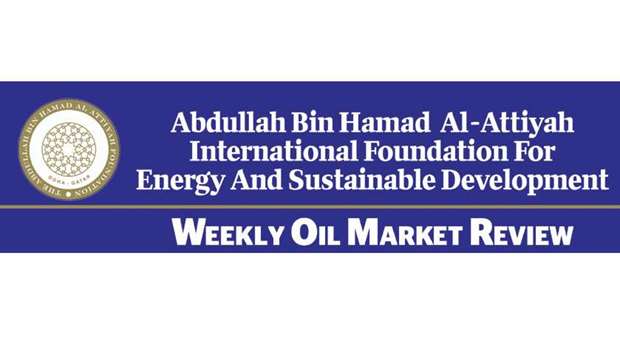Oil
Benchmark crude oil futures finished last week in sharp decline with Brent and WTI losing ground by almost 3% and 5% w-o-w respectively. The crude oil prices were dragged down mainly due to declarations of Saudi Arabia and Russian energy ministers on the discussion of the gradual ease of the Opec+ output cut deal by about 1mn bpd during next month meeting in Vienna. The latest weekly build in US crude and gasoline stocks of 5.8 and 1.9mn barrels respectively also helped the decline. Profit takers and shale producers are also enjoying the party and cashing in whenever they can. US oil drillers added 15 rigs on the week to reach 859 active oil rigs, while for the month the rise was 34.
However, the prices were also having support from the strong demand which is expected to exceed 100 mbpd in the last quarter of this year, according to IEA estimates.
The Opec+ output cut deal and the over compliance to the cut agreement have helped to drain global stocks, and it is this over-compliance and the forecasts on the evolution of stocks that will fuel the discussions of the Opec meeting next month. The over compliance was aggravated by the falling Venezuelan production and prospects of the impact of US sanctions on Iran’s output.
It is clear that the pressure on Opec and its allies is rising to cool down oil prices by raising their output, as the US shale production growth is taking time to fill in the gap which, in turn, is clearly a time bomb for Opec to resolve. The over-compliance to the Opec+ cut agreement is starting to raise serious questions. It looks like that the matter for debate of next month’s meeting will be focused on the objective to bring down this compliance rate to 100%. Thus, Opec and its friends will have to figure out when and how this increase will have to be fairly implemented.
Gas
Asian spot LNG prices gained 6% last week, reaching their highest for three months and representing also a three-year-high for the summer season. The LNG prices were boosted by the upside in crude prices, demand from key Asian buyers and some production outages.
Surging crude prices are lending support to fuel oil which is a substitute for LNG in some sectors. Chinese buyers are being active in releasing LNG purchase tenders as they look to prevent new shortages during next winter. PetroChina started early May limiting gas supplies to big customers. The prospect of warmer weather in Japan during this summer could trigger a favourable impact for LNG demand in the coming months. Angola’s Soyo plant is planned to undergo a shutdown for maintenance next July.
In the US, Henry Hub natural gas futures continued to strengthen for the third straight week. Warm weather going into the summer will likely boost gas demand and eventually aggravate the current gas storage deficit. US natural gas production reached an all-time high of 80 bcfd last Wednesday. In the UK, NBP gas futures declined by more than 1%, mainly due to ample supply from Norway resuming from outages. Expected warmer weather in the UK means consumption would likely fall. However, rising LNG prices limited the decline.
* The author is senior energy
researcher at Abdullah bin
Hamad Al-Attiyah International
Foundation for Energy and
Sustainable Development.

oil market


